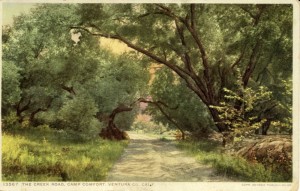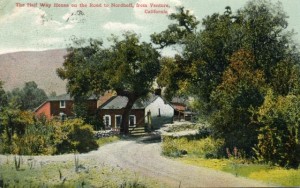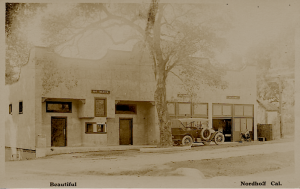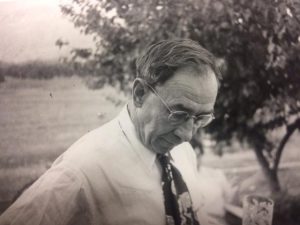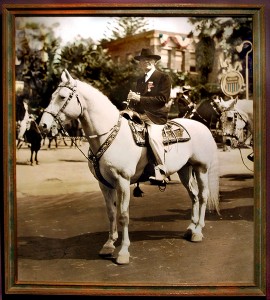The following article first appeared in the Thursday, Sept. 4, 1958 (VOL. 1, NO. 34) issue of THE SENTINEL on the front page. THE SENTINEL was purchased by the Ojai Valley News. It is reprinted here with the permission of the Ojai Valley News. The author is Percy G. Watkins.
HISTORY OF THE VALLEY
Chapter Two: THE VALLEY IN 1900
(Ed. Note: This is another in a series of articles about the valley. Mr. Watkins has been a resident of the Oak View area since 1901. THE SENTINEL is highly honored to print this exclusive series.)
by Percy G. Watkins
THE ROAD FROM VENTURA TO OJAI
From Rocky Flats (Casitas Springs) north, the Ojai road followed the course of 399 to where it starts to run parallel to the railroad now. Then it crossed the tracks to stay close to it on the west ford of the San Antonio Creek. About where 399 leaves the railroad on to go up the San Antonio Creek Valley. The old road then continued about parallel with the railroad on up the Ventura River Valley.
A short distance from the ford, it crossed a private road going from the Hollingsworth Ranch House passing by La Crosse Station (near Casitas Springs) to fording the San Antonio Creek. It reached dry ground near where drying equipment was used in the processing of apricots. The apricot orchard was then south of the Hollingsworth home.
A man named Meyers (I do not know if he spelled his name that way), rented the ranch form Jack Hollingsworth, father of James Hollingsworth who lives there now. The apricot orchard was later very nearly taken away by floods.
The private road went on over the hill as does the Sulphur Mountain road now. On the left further on, where the road starts up the grade over Sulphur Mountain, was a small house with pens and some farm buildings.
Here William (Bill) Foreman lived with his wife and small children. He had horses and wagons and hauled for others—-hay, wood, etc. The place was known as “The Sheep Camp”.
This private road was also used by a Mr. Jennings, who lived where the Rocky Mountain Drilling Co. has its yards. He owned the land from there to Ranch No. 1 (now the Willet Ranch) in the Arnaz area. Here lie the remains of oil well equipment at the first summit of Sulphur Mountain road. However, the road at that time went up the canyon instead of over the present grade.
About a half mile or less up the canyon, in 1900, a crew was drilling a well with cable tools. The man in charge of this venture was a man named Van Epps, who in later years became well know in oil well drilling circles. He was killed several years ago in an oil well explosion near Fillmore. The well, of course, did not produce.
Next Week: A continuation of the road to Nordhoff (Ojai) as it proceeded past the home of Tom Bard (later U. S. Senator) and the first oil well drilled in Calif.

